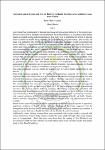| dc.description.abstract | Lira District has experienced evidenced percentage drop in service delivery in the recent years.
However, the effect of internal control system on the service delivery in Lira district has limited
studies as regard testing and documentation. The study was to determine the effect of internal
control system on health service delivery in Lira district local government. Specifically, the
study was guided by the following objectives: to analyzed the effect of risk assessment and
service delivery in Lira District Local Government Health Facilities; to explore the effect of
control activities and service delivery in health facilities; to analyzed the effect of information
and communication and service delivery in health facilities, and to analyzed the effect of
monitoring and service delivery in health facilities of Lira District Local Government.
Stratified and sample random techniques were applied to obtain a sample size of 147 health
workers who formed the unit of inquiry on internal control while health services clients form
the unit of enquiry on the quality of health services delivered. Data were collected by the use
of questionnaire which were self-administered to 147 respondents. The responses were
aggregated to the respective unit of analysis (Health Centers). Statistical packages for Social
Sciences were used to analyzed correlation and regression analysis.
The target population was the middle level employees in various health department in Lira
District.
Multi-level random sampling of 147 middle level employees returned 115 (78.2%) valid
responses. Data was collected by use of a structured self-administered questionnaire. The data
obtained was analyzed using quantitative analysis. Multiple regression models were used to
test whether construct of internal control had significant effect on health service delivery.
The result showed that there is a significant positive correlation between monitoring and
service delivery r=0.222: p value less or equal 0.5. This implies that as the scores in monitoring
increases, the score in service delivery increases. Monitoring is positively correlated with
information and communication (r=0.382, p<0.05) and control activity (r=0.386. p=0.05) and
risk assessment (r=0.3414, p<0.05). Information and communication is positively correlated
with control activities (r=0.265), p<0.05), and risk assessment (r=0.481, p=0.05). Finally,
control activities is positively and significantly correlated with risk assessment (r=0.456,
p<0.05).
Based on the research findings it can be concluded that internal control system is appositive
significant predictor of health service delivery. Findings of the study suggested that the
management at the facility should embrace risk assessment and good cooperate governance to
improve service delivery at health facilities of Lira District Local Government.
Additionally, study findings accrued from cross-sectional study design which is screwed with
certain limitations. Future study should consider the same study through other study designs
such as Longitudinal. Since the study was done from the setting of Lira District Local
Government Health facilities which is in rural setting future study should consider testing this
study in City Health facilities | en_US |

